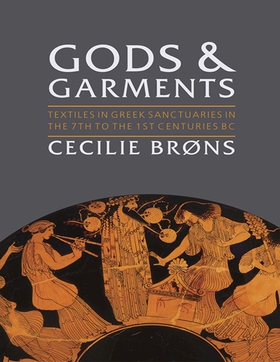
Lägg till önskelistan
Gods and Garments (Ancient Textiles) e-bok
Pris
115 kr
Textiles comprise a vast and wide category of material culture and constitute a crucial part of the ancient economy. Yet, studies of classical antiquity still often leave out this important category of material culture, partly due to the textiles themselves being only rarely preserved in the archaeological record. This neglect is also prevalent in scholarship on ancient Greek religion and ritual, although it is one of the most vibrant and rapidly developing branches of classical scholarship. ...
E-Bok
115 kr
Pris
Förlag
Oxbow Books
Utgiven
15 Februari 2021
Längd
384 sidor
Genrer
Filosofi Och Religion, Historia & Arkeologi, Fackböcker
Serie
Ancient Textiles
Språk
English
Format
epub
Kopieringsskydd
Vattenmärkt
ISBN
9781785703560
Textiles comprise a vast and wide category of material culture and constitute a crucial part of the ancient economy. Yet, studies of classical antiquity still often leave out this important category of material culture, partly due to the textiles themselves being only rarely preserved in the archaeological record. This neglect is also prevalent in scholarship on ancient Greek religion and ritual, although it is one of the most vibrant and rapidly developing branches of classical scholarship. The aim of the present enquiry is, therefore, to introduce textiles into the study of ancient Greek religion and thereby illuminate the roles textiles played in the performance of Greek ritual and their wider consequences. Among the questions posed are how and where we can detect the use of textiles in the sanctuaries, and how they were used in rituals including their impact on the performance of these rituals and the people involved. Chapters centre on three themes: first, the dedication of textiles and clothing accessories in Greek sanctuaries is investigated through a thorough examination of the temple inventories. Second, the use of textiles to dress ancient cult images is explored. The examination of Hellenistic and Roman copies of ancient cult images from Asia Minor as well as depictions of cult images in vase-painting in collocation with written sources illustrates the existence of this particular ritual custom in ancient Greece. Third, the existence of dress codes in the Greek sanctuaries is addressed through an investigation of the existence of particular attire for ritual personnel as well as visitors to the sanctuaries with the help of iconography and written sources. By merging the study of Greek religion and the study of textiles, the current study illustrates how textiles are, indeed, central materialisations of Greek cult, by reason of their capacity to accentuate and epitomize aspects of identity, spirituality, position in the religious system, by their forms as links between the maker, user, wearer, but also as key material agents in the performance of rituals and communication with the divine.




